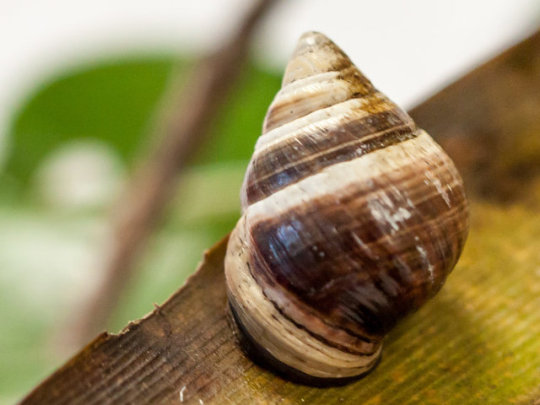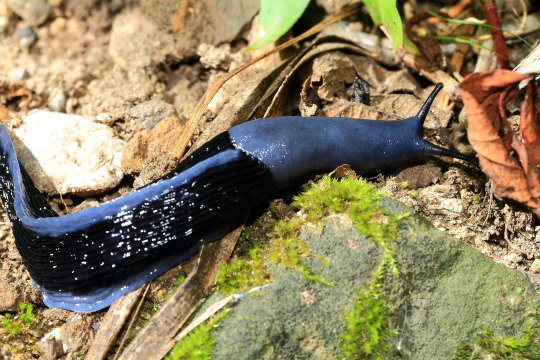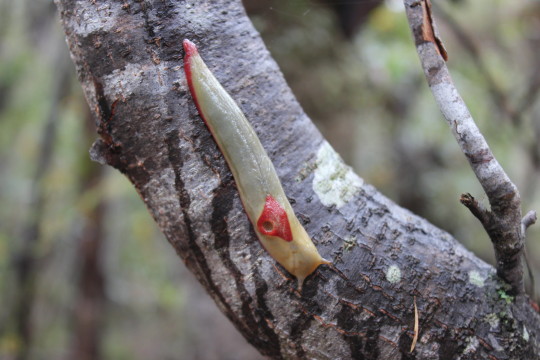#Panpulmonata
Explore tagged Tumblr posts
Text

#Arion ater#Arionidae#Gastropoda#Mollusca#Stylommatophora#Eupulmonata#Panpulmonata#Euthyneura#Heterobranchia#Animalia#gif#disapproving
0 notes
Photo

Kaputar slug (Triboniophorus sp. nov. 'Kaputar')
Photo by n.weigner
#kaputar slug#leaf veined slug#triboniophorus sp. nov. 'kaputar'#triboniophorus#aneitinae#athoracophoridae#athoracophoroidea#elasmognatha#succineoidei#stylommatophora#eupulmonata#panpulmonata#pulmonata#tectipleura#euthyneura#heterobranchia#gastropoda#mollusca#lophotrochozoa#beautiful species
20K notes
·
View notes
Photo

Fluorescent pink slug, unique to Australian mountaintop, survives bushfires | The Guardian
A fluorescent pink slug, found only on a single mountaintop in northern New South Wales, has survived the bushfires that burnt through much of its alpine habitat.
Around 60 of the brightly coloured Mount Kaputar slugs, which can grow to a size longer than a human hand, were spotted by National Parks and Wildlife Service rangers after recent rainfall in Mount Kaputar national park.
The Kaputar fire burnt through the area for more than six weeks from October to December 2019, affecting more than 18,000 hectares of land.
The mountain was formed by a now-extinct volcano, and is home to at least 20 species of snails and slugs found nowhere else in the world. The area has been identified as an endangered ecological community, the first of its kind in Australia.
Some of the fluorescent slugs would have managed to survive the fire because they had “retreated into rock crevices” in the heat, the Australian Museum malacologist Frank Köhler said.
But around 90% of the slug population, which also hibernates in bark and trees, would have been killed in the fire, he said.
Much of the slug’s food sources – fungi, moss and mould – would also have been burnt by the fire, but Köhler said these species should recover relatively quickly.
In coming months the slug might be at risk of being seen more easily in the burnt landscape by hungry birds and mammals, said Köhler, but the bright colour could also act as a warning to dissuade the predators.
#Kaputar Pink Slug#Triboniophorus nov kaputar#Triboniophorus#Athoracophoridae#Athoracophoroidea#Succineoidei#Helicina#Stylommatophora#Eupulmonata#Panpulmonata#Euthyneura#Heterobranchia#Gastropoda#Mollusca#slug#endangered#wildfire#Australia
306 notes
·
View notes
Photo


Banff Springs Snails Physella johnsoni
#snails#banff#banff springs snails#mollusca#animalia#gastropoda#gastropod#heterobranchia#euthyneura#panpulmonata#nature#animals#wildlife#invertebrates#endangered#endangered species#endangered wildlife#freshwater snails#physella#physella johnsoni#physidae
11 notes
·
View notes
Photo
This breaks my heart.

George, the last of his species of Hawaiian land snail, died on New Year’s Day. He was approximately 14 years old.
His death was confirmed by Hawaii’s Department of Land and Natural Resources.
George was born as part of a last-ditch effort to save his species. Back in 1997, the last 10 known Achatinella apexfulva were brought into a University of Hawaii lab to try to increase their numbers. Some offspring resulted, but all of them died – except for George.
As the last remaining A. apexfulva, George lived out his days alone in a cage at DLNR’s snail lab in Kailua, Oahu, alongside 30 other species close to extinction.
Those who knew George say he kept to himself.
“For a snail he was a little bit of a hermit,” David Sischo, a wildlife biologist with the Hawaii Invertebrate Program, tells NPR. “I very rarely saw him outside of his shell.”
Sischo said George likely died of old age, as 14 is “up there in snail years.”
George, Reclusive Hawaiian Snail And Last Of His Kind, Dies At 14
Photo: David Sischo/Hawaii Department of Land and Natural Resources
#Animalia#Mollusca#Gastropoda#Heterobranchia#Euthyneura#Panpulmonata#Stylommatophora#Sigmurethra#Achatinoidea#Achatinellidae#Achatinella#Achatinella apexfulva#snails#land snails#molluscs of Hawaii#endemic fauna of Hawaii#critically endangered fauna of the United States#wildlife
2K notes
·
View notes
Photo

Carpathian blue slug (Bielzia coerulans)
Photo by Alan Fenn
#carpathian blue slug#blue slug#bielzia coerulans#bielzia#limacinae#limacidae#limacoidea#limacoid clade#sigmurethra#stylommatophora#eupulmonata#panpulmonata#tectipleura#euthyneura#heterobranchia#gastropoda#mollusca#lophotrochozoa
277 notes
·
View notes
Photo

Semi-slug (Coloniconcha prima)
Photo by Carlos De Soto Molinari
#semi slug#coloniconcha prima#coloniconcha#pleurodontidae#helicoidea#helicina suborder#sigmurethra#stylommatophora#eupulmonata#panpulmonata#pulmonata#tectipleura#euthyneura#heterobranchia#gastropoda#mollusca#lophotrochozoa
254 notes
·
View notes
Photo

Red triangle slug (Triboniophorus graeffei)
Photo by Annette Teng
#red triangle slug#triboniophorus graeffei#triboniophorus#aneitinae#athoracophoridae#athoracophoroidea#elasmognatha#succineoidei#stylommatophora#eupulmonata#panpulmonata#pulmonata#tectipleura#euthyneura#heterobranchia#gastropoda#mollusca#lophotrochozoa
33 notes
·
View notes
Photo

European black slug (Arion ater)
Photo by Michael Rich
#id'ing#european black slug#arion ater#arion#arionidae#arionoidea#sigmurethra#stylommatophora#eupulmonata#panpulmonata#tectipleura#euthyneura#heterobranchia#gastropoda#mollusca#lophotrochozoa
115 notes
·
View notes
Photo

Red triangle slug (Triboniophorus graeffei)
Photo by Ken Griffiths
#red triangle slug#triboniophorus graeffei#triboniophorus#aneitinae#athoracophoridae#athoracophoroidea#elasmognatha#succineoidei#stylommatophora#eupulmonata#panpulmonata#pulmonata#tectipleura#euthyneura#heterobranchia#gastropoda#mollusca#lophotrochozoa
173 notes
·
View notes
Photo

Rainbow drop snail (Helicina clappi)
Photo by John Slapcinsky
#rainbow drop snail#helicina clappi#helicina suborder#helicina#sigmurethra#stylommatophora#eupulmonata#panpulmonata#pulmonata#tectipleura#euthyneura#heterobranchia#gastropoda#mollusca#lophotrochozoa
30 notes
·
View notes
Photo

Carpathian blue slug (Bielzia coerulans)
Photo by Ondřej Michálek
#carpathian blue slug#blue slug#bielzia coerulans#bielzia#limacinae#limacidae#limacoidea#limacoid clade#sigmurethra#stylommatophora#eupulmonata#panpulmonata#tectipleura#euthyneura#heterobranchia#gastropoda#mollusca#lophotrochozoa#beautiful species
263 notes
·
View notes
Photo

Land snail (Vitrinula moluensis)
Photo by Chien Lee
#vitrinula moluensis#vitrinula#vitrinulini#macrochlamydinae#ariophantidae#helicarionoidea#limacoid clade#sigmurethra#stylommatophora#eupulmonata#panpulmonata#tectipleura#euthyneura#heterobranchia#gastropoda#mollusca#lophotrochozoa
72 notes
·
View notes
Photo

Snail (Anisoloma tsarakely)
Photo by John Slapcinsky
#dead specimen#anisoloma tsarakely#fauxulus#fauxulidae#pupilloidea#pupilloidei#helicina#sigmurethra#stylommatophora#eupulmonata#panpulmonata#pulmonata#tectipleura#euthyneura#heterobranchia#gastropoda#mollusca#lophotrochozoa
33 notes
·
View notes
Photo

Slug (Limax dacampi)
Photo by Roberto Rinaldi
#limax dacampi#limax#limacinae#limacidae#limacoidea#limacoid clade#sigmurethra#stylommatophora#eupulmonata#panpulmonata#tectipleura#euthyneura#heterobranchia#gastropoda#mollusca#lophotrochozoa
2 notes
·
View notes
Photo

Snail (Aegista elegantissima)
Photo by Yuji Ohara
#snail#aegista elegantissima#aegista#bradybaenidae#helicoidea#helicina#sigmurethra#stylommatophora#eupulmonata#panpulmonata#pulmonata#tectipleura#euthyneura#heterobranchia#gastropoda#mollusca#lophotrochozoa
29 notes
·
View notes